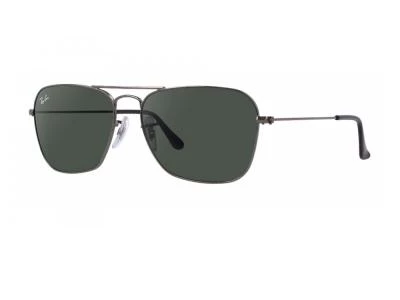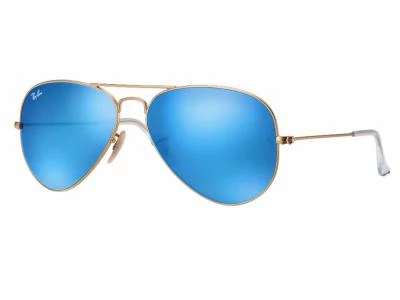Ray-Ban sunglasses were originally manufactured for pilots of the United States Air Force by with lenses designed to cut out glare at high altitudes.
Pilots were complaining of headaches and nausea and Ray-Ban makers Bausch & Lomb (B&L) came up with a lens they claimed could cure both.
The first Ray-Ban lenses to accomplish the feat were its XLT lenses manufactured in 1937. They came in two flavours, the B-15 which were coloured brown and the G-15 which were green.
Essentially they were the same lens, both allowing about 15% of the light through the lens (hence the 15 tag) although the brown lens showed objects with sharper contrast.
Although the green G-15 lens had less contrast it gave a softer edge to objects. Both lenses, however, cut out 100% of damaging ultraviolet rays and are impact resistant and not prone to scratching.
It has long been known that the human eye is more responsive to the yellow/green part of the colour spectrum and Ray -Ban's XLT lenses emphasised that range of colours and so images had a more clear, natural look compared to other sunglasses.
Gradient lenses
Ray-Ban continued to innovate in the field of lens design throughout World War II. The Aviator sunglasses were still being used by pilots and improved vision was needed for the country's top flyers.
One of the drawbacks of the original XLT lens was that pilots found it difficult to see instrument readouts in the relatively dimly lit cockpits.
As a result B&L developed the gradient lens which sported a mirrored, glare reducing coating at the top of the lens with a clear area at the bottom. Pilots now had eye protection when they looked up but could easily glance down at the instrument panel. It was the best of both worlds.
Of course, fighter pilots were heroes and it wasn't long before the public wanted to look just like them. Cool-looking gradient lenses took off in a big way
Polarised lenses
It was the introduction of polarised lenses that made Ray-Bans popular with sports enthusiasts and all those who follow outdoor pursuits.
Polarised lenses block horizontal light waves while letting vertical wave through. As light that bounces off large, flat expanses tend to be horizontal, polarised lenses are particularly effective out of doors.
Sailors, especially, need no longer suffer the glare from large expanses of water and polarised sunglasses are highly effective on sandy beaches or in the open countryside.
Polychromic lenses
Not to be confused with polarised lenses, polychromic lenses are 'transitional', that is they automatically go darker when exposed to sunlight and turn clear in the dark.
Polychromic lenses will still cut out 100% of ultraviolet light as do all Ray-Ban lenses and they can be constructed from a wide variety of materials such as plastic, glass or polycarbonate.
This type of lens is particularly beneficial to those with prescription lenses as it avoids users having to carry two pairs or sunglasses with them, one for outdoors and another for inside.
Ambermatic lenses are similar to polychromic lenses in that they darken outdoors but here they change colour from amber to brown a colour favoured by skiers and winter sports enthusiasts as they not only reduce glare but increase sharpness in winter whiteout conditions.
Over the decades, Ray-Ban has produced a number of innovations in lens design and manufacture. In 2011 they launched the Ray-Ban Light-Ray prescription eyewear with a kit of three interchangeable lenses so that users could personalise their look at any time.
They also introduced three lens colours from the 1960s for their Ray-Ban Round, Meteor and Laramie models. The colours were shocking pink, blue and green. The following year the company launched 20 new gradient lens colours that included several bi-gradient colour combinations.
Re-launching classic models with a new take has become a regular feature of Ray-Ban branding. The Ray-Ban Cats series saw the 1980s classic models in a range of brash and bold colours including two-tone frames and smoked glass lenses for women and men.
Through every decade, Ray-Ban has helped shape popular culture with cutting-edge design and marketing initiatives. Far from being a transient trend, Ray-Ban eyewear has become an enduring classic right around the globe.



